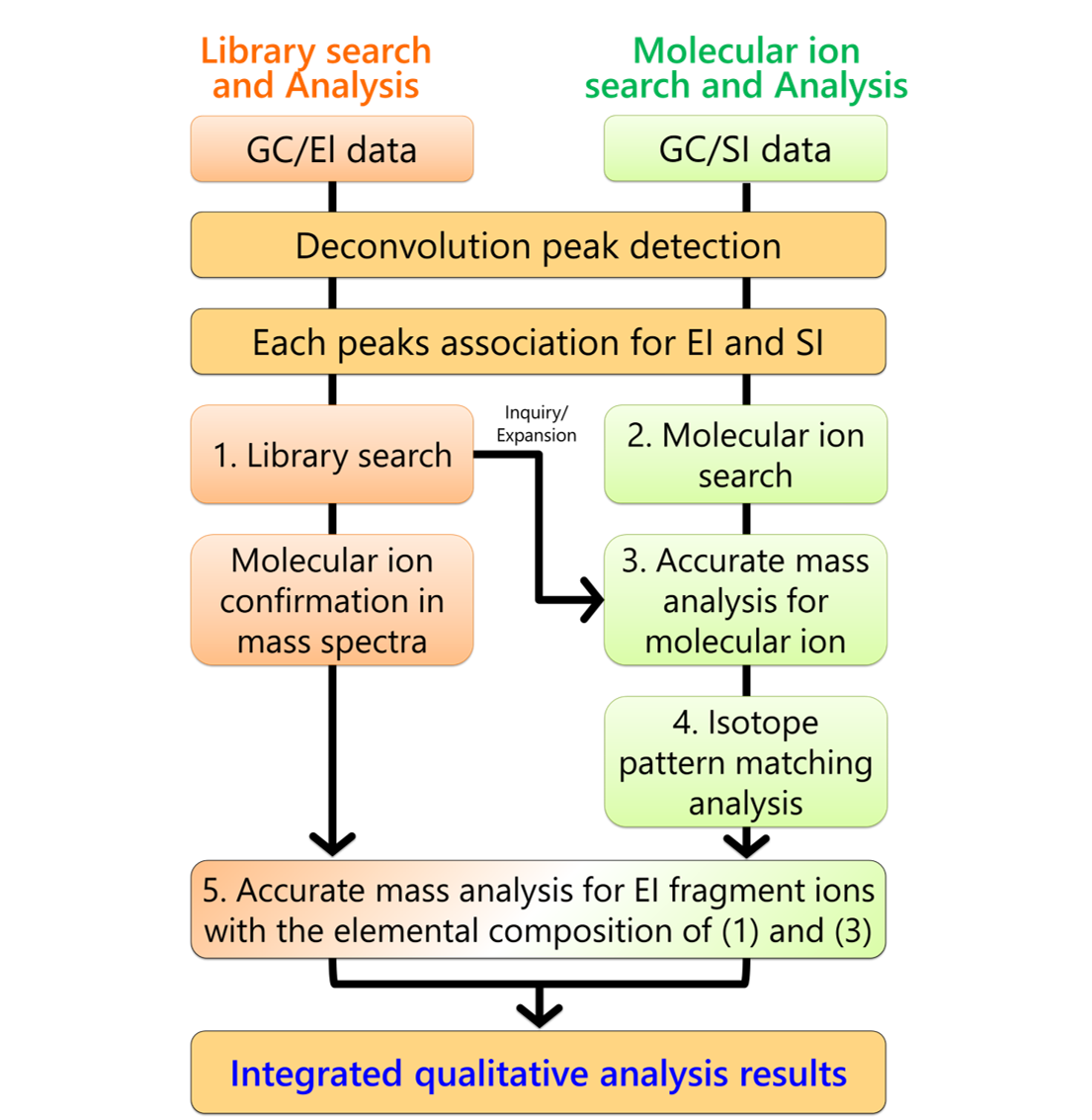

Gas Chromatography-Mass Spectrometry (GC-MS) is widely used to separate compounds in complex mixtures, and analytes are typically identified through library database searches. This sounds like a very straightforward process in principle, but in practice compound identification can be complicated by having multiple high-scoring database matches or low-scoring matches for coeluting peaks. Furthermore, many compounds may not be registered in the database. Therefore, new analytical techniques are needed that make use of the information from high-resolution measurements and soft ionization methods.
In this presentation, we will discuss a new GC-MS analysis workflow that uses high resolution MS in combination with EI and soft ionization methods. The data interpretation software automatically generates a color-coded qualitative analysis report for all analytes present in the sample. The new workflow consists of chromatographic peak deconvolution followed by database matching, elemental composition determination for the molecular ion, isotope pattern matching, and EI fragment accurate mass analysis to identify the most likely candidate for compounds registered in the databases. This information can also facilitate the identification of compounds that are not in the database. A variety of samples will be presented to demonstrate the effectiveness of this new workflow.
Key Learning Objectives:

John graduated from Colorado School of Mines in 2006 with a doctorate in applied chemistry with a focus on mass spectrometry. Afterwards, he a took a postdoctoral position at the National Renewable Energy Laboratory to study biodiesel combustion. John joined JEOL USA, Inc. in 2008 as an MS applications chemist and supports all MS product lines, which include GC-MS, GCxGC-MS, MALDI-MS, and DART-MS. He currently lives in the Boston area and enjoys getting outdoors whenever possible.